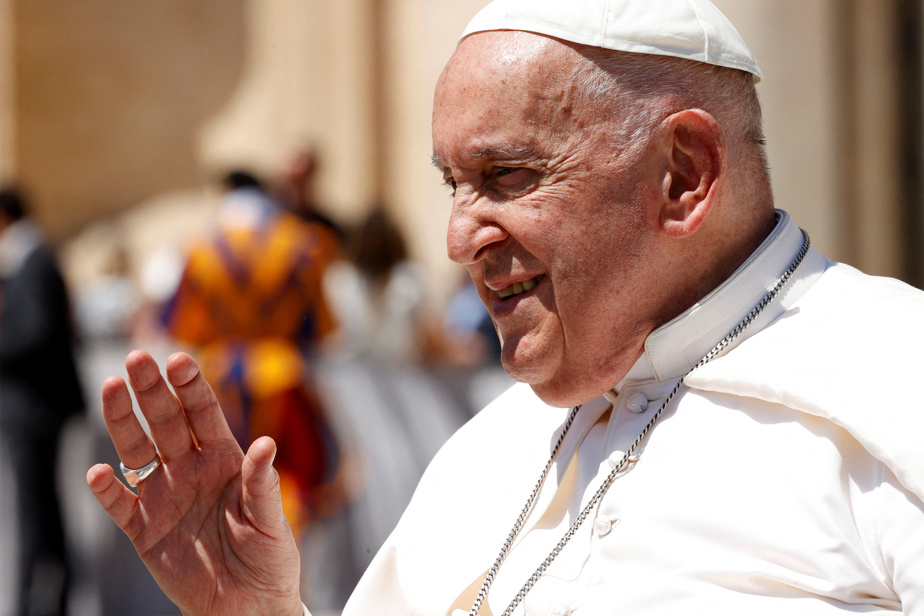(Vatican City) The unexpected invitation of Pope Francis to the G7 Summit to speak on artificial intelligence (AI) testifies to the Vatican’s growing interest in this revolutionary tool, which the Church wants to encourage while warning on the risks of drift.
Francis, both spiritual leader and head of state, will speak on Friday before G7 leaders meeting in Puglia, in southern Italy, the first participation of a pope in such an event. Among others, American President Joe Biden and French President Emmanuel Macron will be present.
A priori, the octogenarian leader of an institution that is two thousand years old does not seem the most obvious candidate to intervene on cutting-edge technology, but he sees AI as a crucial challenge for humanity.
“The Church always considers humans as the center of its mission. From this perspective it is clear that what interests him is not the technical tool, but how and to what extent it can impact human life,” explains Brother Paolo Benanti, advisor, to AFP. of the Pope and the Vatican’s leading expert on AI.
For this Franciscan professor at the Pontifical Gregorian University in Rome and member of the United Nations advisory body on AI, this technology acts as “a multiplier”, particularly in “medical research” and “the capacity to ensure greater social well-being.
The Vatican has surrounded itself with AI experts to study its multiple impacts, with increased attention to ethics. Many of them are references, like the British researcher Demis Hassabis, the director of Google DeepMind, member since March of the Pontifical Academy of Sciences.
“The asset” neutrality
In 2020, the Vatican initiated the Rome Call for AI Ethics, signed by Microsoft, IBM, the UN, Italy and a myriad of universities, urging transparency and to respect for private life.
Beyond the dialogue it has opened with scientists and entrepreneurs, can an institution whose priorities seem at odds with those of business leaders make its voice heard on these issues on a global scale?
“Paradoxically, the fact that there is no “Vatican Tech” is an asset in terms of neutrality: the Church has no hidden agenda, has no digital economy, “nation to take off, investment to attract”, underlines Eric Salobir, French priest and president of the executive committee of the Human Technology Foundation, a network contributing to the development of technologies for the benefit of humans.
Thus, the Vatican speaks “of technology for what it is, for what it does to humans, without itself having any interest to defend,” he adds. “It may be one of the only states in this situation.”
After repeated speeches on the subject, Francis dedicated his message for World Peace Day to it at the end of 2023, illustrating the place occupied by AI on the agenda of the Holy See.
He invited the international community to adopt a treaty governing its use in the face of “serious risks” linked to new technologies, such as “disinformation campaigns” or “interference in electoral processes”, like the regulation adopted by the European Union (EU), the first in the world.
CatéGPT and HelloBible
Pope Francis, who called in 2023 for an “algorethics”, intends to remain vigilant about what he calls the “specter of a new slavery”.
Italy, host country of the G7, wants to make AI a key theme of the summit, in particular its impacts on the job market, and Prime Minister Giorgia Meloni said in April that she was “convinced that the presence of Saint-Père will make a decisive contribution to the definition of a regulatory, ethical and cultural framework for artificial intelligence.”
As with the theme of migration and the environment, Francis “seems to have a sort of antenna which allows him to perceive where humanity is experiencing the situations of greatest challenge for itself”, underlines Brother Benanti.
At the G7, “we can expect it to remain in line with what has been published so far: attention to the most vulnerable, a call for a form of taking into account risks and regulation without being alarmist”, predicted to AFP Eric Salobir, also author of the book “God and Silicon Valley”.
The Bishop of Rome was himself the subject of AI-generated images that went viral on the web, depicting him wearing a white puffer jacket, at a nightclub, or even getting married.
The Church was quick to take advantage of these tools to evangelize: platforms like CatéGPT or HelloBible offer to enlighten the faithful on Catholic doctrine.
